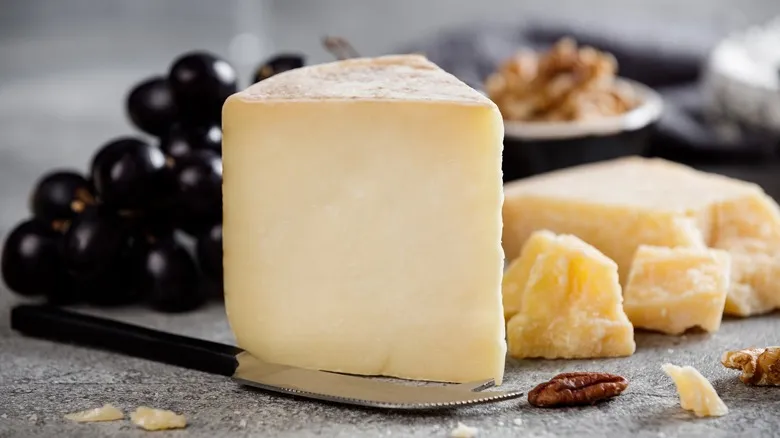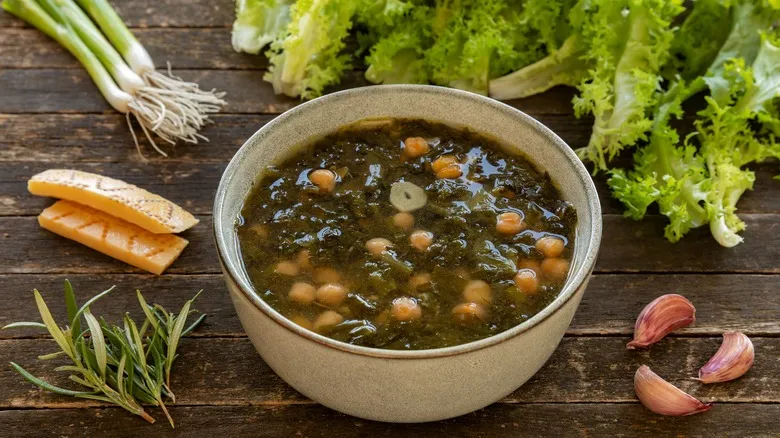Why broth and a cheese rind are a perfect combo

Broth is fundamentally a blend of diverse flavors that serves as a foundation for soups and sauces. Typically, broth is prepared using meat, but it can also include ingredients like onion skins and vegetable peels to enhance the flavor, or it can be made entirely vegetarian. It's important to distinguish broth from stock, which is primarily made from bones. Incorporating Parmesan rind into broth is a logical choice, as it is another often-overlooked food item that, when simmered for an extended period, imparts a rich umami flavor to the liquid. But what exactly is a Parmesan rind, and why is it so beneficial in cooking?
Unlike cheeses such as brie or Camembert, which have soft, bloomy rinds, the primary distinction between the rind and the interior of Parmesan lies in its moisture content. As Parmesan ages, the rind becomes drier, forming a hard exterior. While this makes the rind tough to eat, it also intensifies its flavor. Adding the rind to your soup or broth can unlock its full potential, allowing its umami-rich taste to permeate the liquid. Think of it as a cheesy bay leaf, providing the perfect depth to your dish. Beyond flavor enhancement, the rind can also improve the texture of your soup, which may otherwise be somewhat thin. Incorporating Parmesan rind helps emulsify fats into the broth, resulting in a slightly thicker, velvety consistency.
Recommended

The Popular Italian Cheese That Is Actually Lactose-Free

What Makes Uncured Ham Different From Its Cured Counterpart?

The Luxurious Difference Between Bisque And Soup

The Everything Guide To Cooking With Sage
Next up

